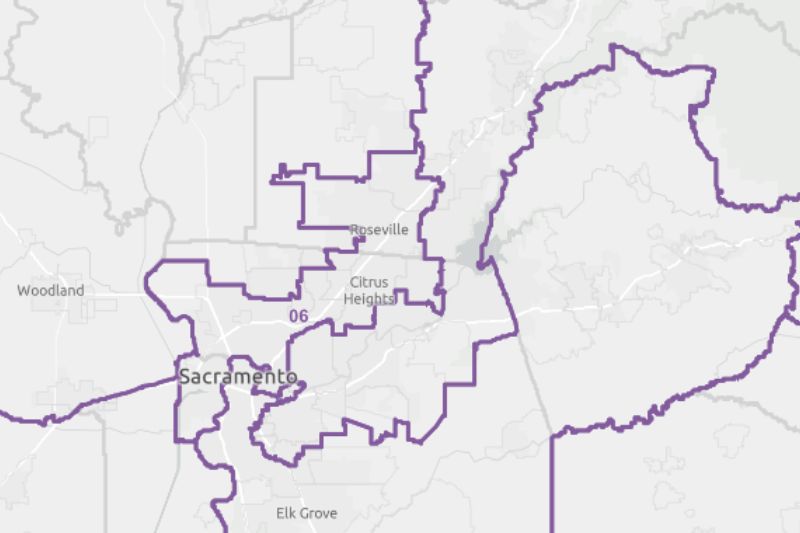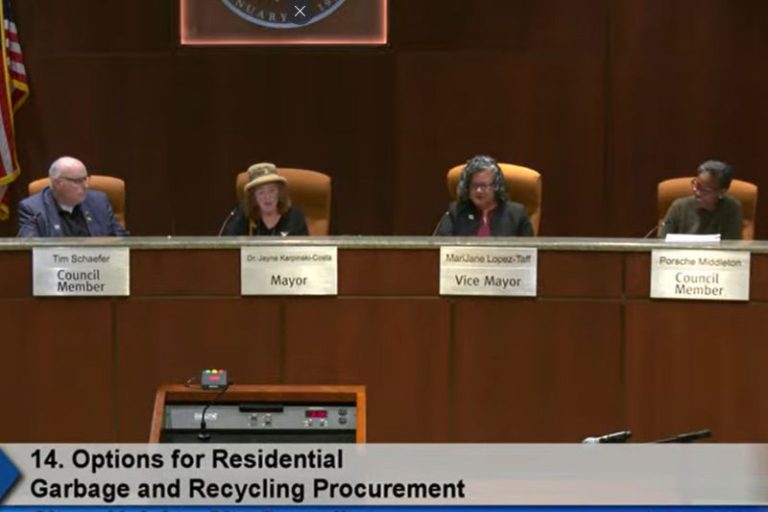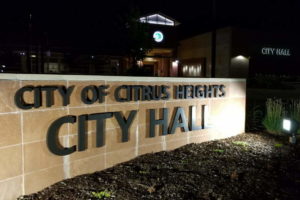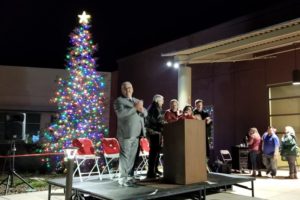
By Sara Beth Williams–
As residents begin casting their vote on Prop 50 in the 2025 special election, congressional candidate and local business owner Ray Riehle weighed in on the proposed redistricting map for Congressional District 6, saying it would change the partisan composition of voters in Citrus Heights’ district.
Riehle, a Republican, shared an overlay map with The Sentinel showing the differences between the current District 6 boundaries and the boundaries on the new proposed map. Under the redistricting proposal, the share of registered Democratic voters in the district would decrease, while the proportion of registered Republican voters would increase slightly.
The new map includes a larger portion of Placer County, including the cities of Roseville and Rocklin, which were previously not part of District 6. Meanwhile, Rancho Cordova and Rancho Murieta would be removed from the district, if approved by voters.
According to Ballotpedia, approving the proposed maps would shift several congressional districts, including District 6, altering the partisan balance. Currently, District 6 votes strongly Democratic, but the new map adjustment would shift some conservative voters from Placer County into District 6. While the district would still lean Democratic, the change would reduce the Democratic advantage in District 6 and slightly increase Republican representation.
Ballotpedia map comparisons of current and proposed maps shows a shift from +14 points currently in favor of Democrats to +8 points with the new map in District 6, based on how voters voted in the 2024 presidential election.
While the modifications would reduce Democratic margins in District 6, the new map would strengthen Democratic votes in neighboring Congressional District 3, where the Republican Kevin Kiley would see his district shift from a four-point Republican leaning district to a 10-point lean in favor of Democrats, Ballotpedia shows.
Though the new district map would result in a district more favorable to his party, if approved by voters, Riehle said he disagrees with the idea of political officials redrawing district maps at all and called it “illegal,” saying redistricting should be left to the Citizen’s Redistricting Commission.
The Redistricting Committee was established in 2008, Riehle explained, emphasizing that there is “no reason” to justify what California Gov. Gavin Newsom has proposed.
Local resident David Warren, a longtime public safety lobbyist and registered Democrat, agreed that bypassing the independent commission is unfair but noted that currently other states are operating under different standards.
“If any state, i.e., Texas, Missouri, and other Republican states such as Florida and Alabama, will gerrymander Democratic Party congresspersons out of existence in order to preserve the republic, California will have to lower our standards to match theirs,” Warren said.
How did we get here?
Redistricting by voter initiative through the California Citizens Redistricting Commission is legal under state law. However, for decades, California’s legislatures controlled redistricting and allowed the majority party to draw maps benefiting incumbents. This involved both parties over the years, and by the early 2000s, many seats were considered “safe,” and critics argued elections lacked competitiveness.
In 2005, then-California Gov. Arnold Schwarzenegger advocated for an independent commission to draw political boundaries, according to a local news report that breaks down the history of redistricting and how we got to where we are today. Schwarzenegger argued that politicians could not be trusted to map their own districts. The former governor has also been a vocal opponent of the current efforts of redistricting made by Newsom.
Voters passed Proposition 11, the Voters FIRST Act, in 2008, creating the California Citizens Redistricting Commission to handle state legislative boundaries. Proposition 20, passed in 2010, extended the commission’s authority to U.S. Congressional districts.
Currently, redistricting is allowed every 10 years and typically proceeds after the census so as to incorporate census data. The commission consists of 14 members, including five Democrats, five Republicans, and four who are not affiliated with either major party. Members are chosen through a multi-step process designed to prevent conflicts of interest, and the commission must follow strict, nonpartisan criteria, including compliance with the Voting Rights Act and maintaining equal population across districts.
In July, President Donald Trump encouraged the Texas Legislature to redraw U.S. Congressional maps to help maintain Republican control. Five districts were redrawn to flip seats currently held by Democrats, and the maps were approved in August. Newsom opposed the Texas move as “blatantly political” and subsequently proposed redrawing maps in California, aiming to offset Republican gains in Texas.
The California Legislature approved the proposed new maps earlier this year, prompting a special election that will take place on Nov. 4. The vote asks residents to temporarily suspend the state’s independent redistricting system for U.S. Congressional districts, allowing the new maps to be used for the next three election cycles in 2026, 2028, and 2030.
Republican lawmakers filed an emergency petition with the California Supreme Court to block the special election, which was denied.
Voting has already begun as of Oct. 6. The Sacramento County Elections Office shows multiple voting centers are available for mail-in ballot drop-off. Several centers are scheduled to open for in-person voting as early as Oct. 25. A list of available centers for both ballot drop-off and in-person voting is available here.
The Sentinel welcomes letters about local issues. Share your thoughts on Prop 50 in a letter to the editor or opinion column: Click here.










